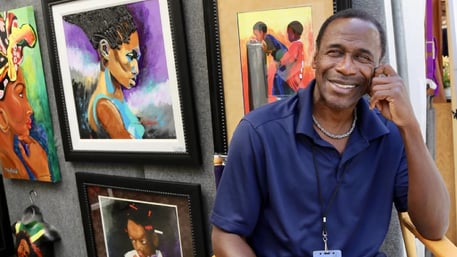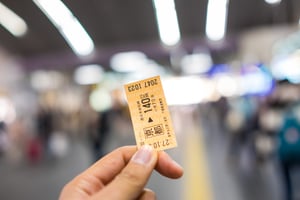In the buzzing world of events, a strong brand is your ticket to standing out and attracting a...
The key to strong vendor and artist growth for a festival
Vendors and artists do much more than fill spaces on your festival map—they help drive a successful event and shape the festival’s identity. If you’re planning a festival for the first time or bringing fresh ideas to different types of events, remember that building strong partnerships with your vendors and artists makes your event stand out and keeps your target audience engaged.
So, how do you go beyond simply booking vendors and artists? The answer lies in creating a thoughtful market strategy and supporting your partners throughout every step of the planning process.
This guide will share vendor growth strategies and artist development tips you can use—no matter if you’re hosting a trade show, a large annual festival, or any other gathering. You’ll also find practical event planning tips for creating an environment where vendors managing stands or artists performing on stage have the chance to thrive alongside your team members.
Table of contents
- Strategies For cultivating vendor success
- Nurturing your artists for long-term partnerships
- Putting it all together: A model for growth
- Build a thriving festival ecosystem
Strategies for cultivating vendor success
For many vendors, joining your event is a vital way to grow their products and services, reach new potential customers, and become part of a wider community. Here are several event planning tips to help you save time, support vendors, and streamline the management process for your team members.
1. Provide data-driven insights
Vendors often ask which products or services draw the most interest or what brings event attendees to certain booths. Use your event management platform to gather and share helpful, anonymous data:
- Peak sales times: Give vendors insights on when and where booth activity and sales are highest, so they can optimize staff and plan their next event marketing campaign or email campaigns.
- Popular product categories: Share trends about what types of products and services attract the most attention at your successful event.
- Attendee demographics: Let vendors know who is coming so they can customize their offerings and market strategy for each type of event and customer base.
2. Create tiered vending opportunities
A skilled event planner recognizes that not every vendor has the same goals or experience level. Offer options that meet a range of needs:
- Incubator programs: Create spaces for new vendors managing a smaller range of products or services, so they can join your event at a lower price point and gain valuable experience with different types of events.
- Premium placements: Allow established vendors to pay more for high-traffic areas, boosting revenue and making room for smaller businesses.
3. Facilitate networking and mentorship
Events are about more than one-time sales—they’re also about building connections. Invite experienced vendors and team members to share advice with newcomers. Host pre-event mixers, where everyone can talk about what works, what to avoid, and how to reach more potential customers. Formal mentorship programs, especially at big events like a trade show, help newcomers learn and save time by avoiding common pitfalls, making the entire festival a more supportive space. You can also have a post-event survey that will help gain insights about your vendors so that you can help better your event and support them.
Nurturing your artists for long-term partnerships
Supporting artists is just as important as helping vendors. Artists want opportunities to reach new people, promote their work, and be part of a successful event. Here’s how you can help as an event planner:
1. Offer professional development workshops
 Many artists excel on stage but need help with event promotion or setting up an email marketing and event marketing campaign. Host workshops on growing an audience, effective email campaigns, and smart ways to plan for future gigs.
Many artists excel on stage but need help with event promotion or setting up an email marketing and event marketing campaign. Host workshops on growing an audience, effective email campaigns, and smart ways to plan for future gigs.
- Schedule these during your overall planning process, or run them as online sessions leading up to your event.
- Bring in guest speakers, such as established artists or professionals who can share practical event planning tips.
2. Create high-quality promotional assets
Photos and videos are essential for artists who want to reach more event attendees and potential customers—and they also help with promoting your event. Use your event’s management platform to offer quick photo or video sessions for performers.
- Give artists these assets, so they can use them in their own market strategy or when sharing your event on social media, email campaigns, or their own channels.
3. Build a ladder of opportunity
Structure your event so artists have clear paths to grow—whether they are new to the scene or already established. Give emerging acts opening slots, hold audience choice awards, or feature returning artists in your event marketing campaign or planning process. This keeps artists engaged and working toward bigger future opportunities.
Putting it all together: A model for growth
Think about how all of these ideas connect. Maybe a first-time vendor joins your event, learns keys to success from a mentorship session, uses feedback from your management platform, and adjusts what products or services they offer next year. At the same event, a local artist tries out tips from a promotional workshop, grows their customer base, and gets a better slot the next year—thanks to strong engagement tracked through email campaigns and event promotion.
With support from you and your team members at every step, these vendors and artists enjoy new growth, and your event benefits with higher attendance, better energy, and improved results. These strong partnerships make promoting your event easier and help you save time through a more efficient planning process.
Build a thriving festival ecosystem
Helping your vendors and artists grow goes beyond single bookings. By sharing data, setting up different opportunities, supporting connections, and giving everyone a chance to learn, you set your event up for long-term success—no matter what types of events you run or who your target audience is.
When you invest in the people and businesses providing products and services at your event, you’re also building your reputation as a top event planner. Focus on creating a well-run, successful event with loyal partners and happy event attendees. This makes your event promotion easier and ensures new partners want to join next time—whether it’s a festival, trade show, or another type of gathering.




